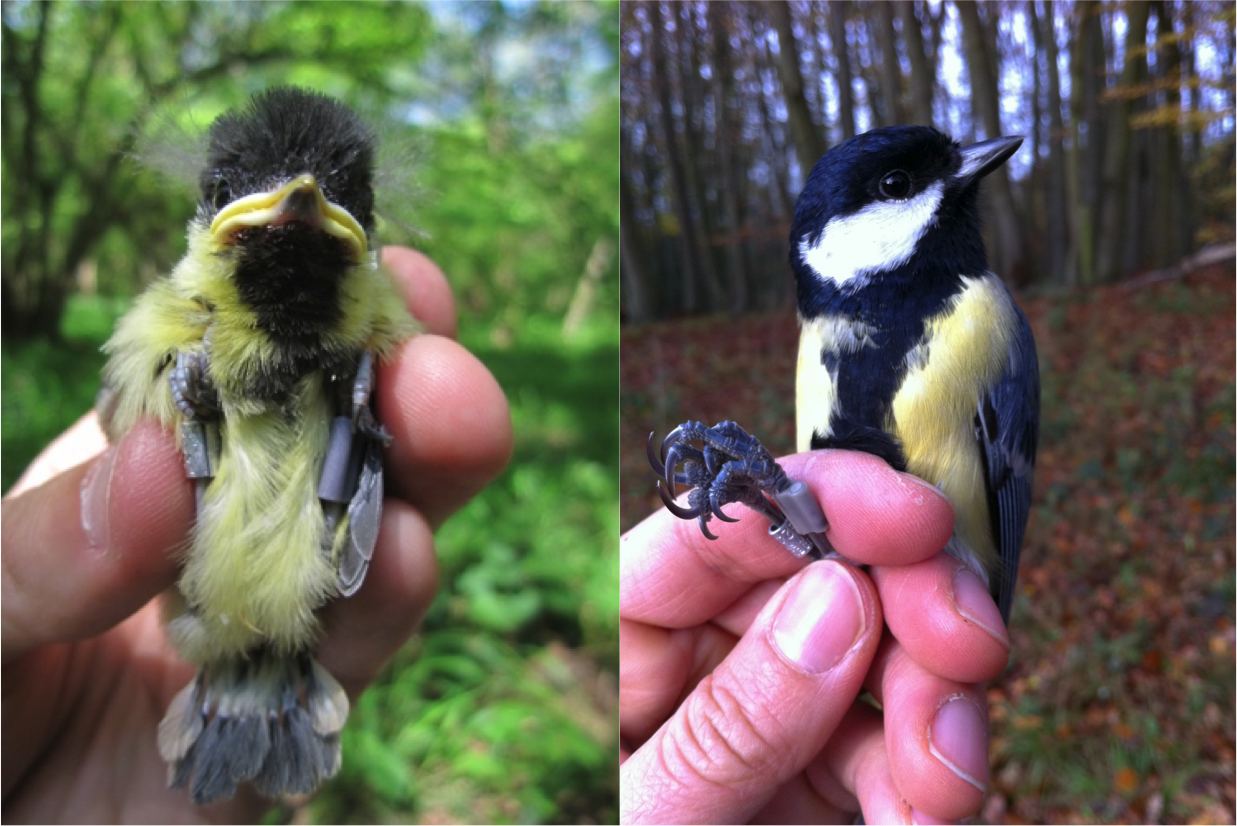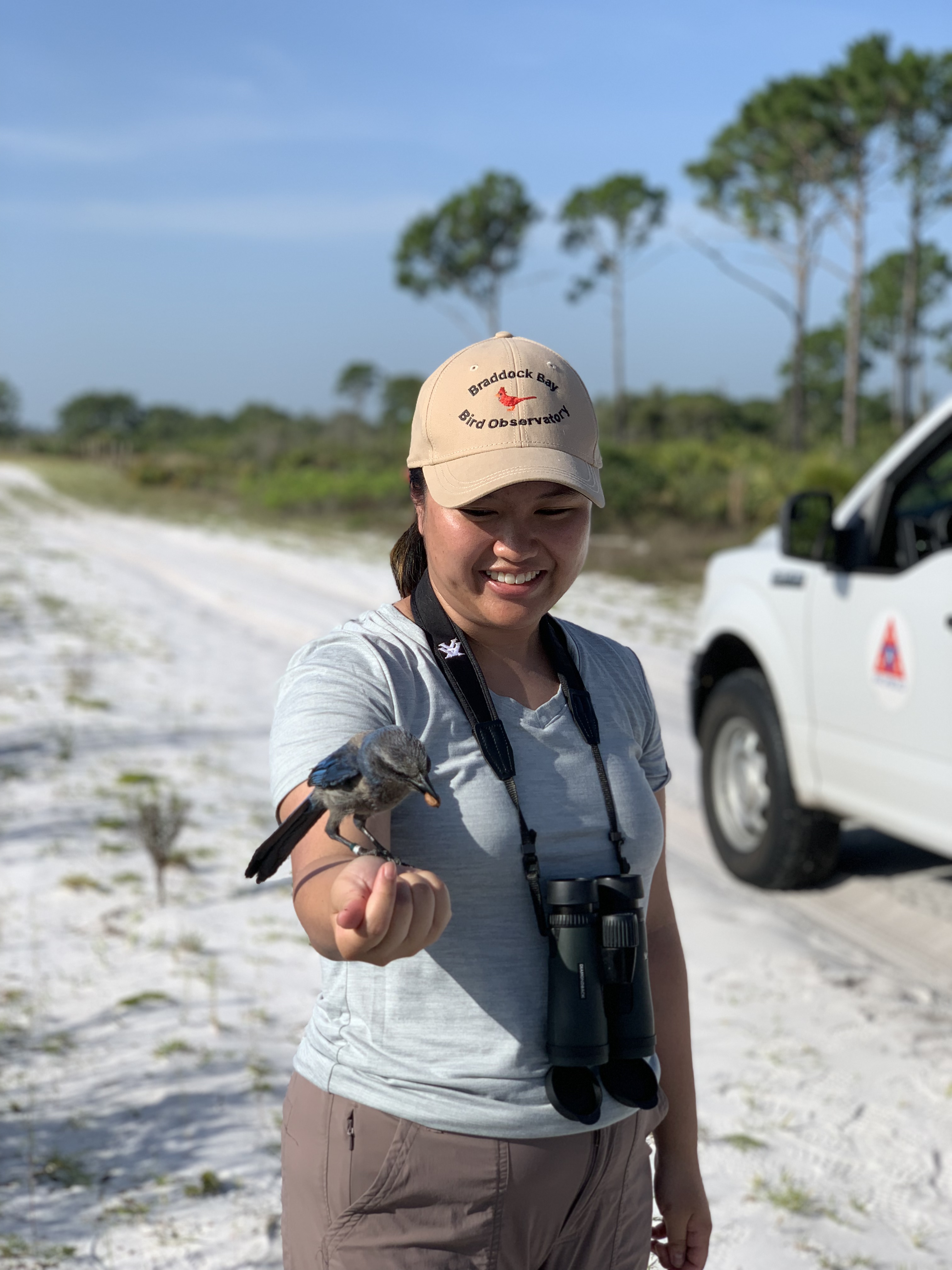"Social Familiarity and Spatially Variable Environments Independently Determine Reproductive Fitness in a Wild Bird"
Posted on
by

Why are some individuals successful, and others aren’t? Variation in fitness is the basis of evolution, and understanding why and how this variation exists, and what drives these patterns in natural populations, is a fundamental question in evolutionary biology. One phenomenon that can influence individual reproductive success in the wild, particularly in territorial species, is social familiarity. Familiarity between social neighbors leads to reduced aggression and territory defense, thereby allowing individuals to allocate more time and energy to other beneficial activities (as in the ‘dear enemy’ hypothesis). Studies across a wide variety of taxa have shown positive relationships between familiarity and fitness, both within and between mating pairs.
However, confounding correlates with spatial drivers of success, such as habitat quality and the increased likelihood of an animal to return to a site it occupied previously, can make direct associations between social familiarity and fitness difficult to elucidate. Additionally, spatial autocorrelation may inflate the perceived effect of social neighborhood on fitness outcomes. Spatial autocorrelation is the tendency for a pair of observations close in geographic space to be more similar to each other than expected by chance. For example, two neighboring breeding pairs of birds may have a similar number of chicks simply because they reside in the same patch of forest with the same resources; therefore, their related fitness outcomes are just a byproduct of habitat heterogeneity and patchiness. To disentangle these associations, researchers can leverage demographic, life history, and environmental data from long-term studies of populations in the wild.
The great tit (Parus major) population in Wytham Woods, Oxford, United Kingdom, has been extensively monitored since the 1960s, with individual birds being banded as nestlings and tracked throughout their lifetimes. Breeding pairs are monogamous and almost exclusively use nest boxes; field researchers visit each nest box throughout the breeding season to record a myriad of fitness-related characters such as lay dates, clutch size, hatch date, nestling weights, and number of successful fledglings. A study by Grabowska-Zhang et al. in 2012 found that familiarity between neighbors resulted in direct fitness benefits, like higher reproductive success. However, this study did not consider other ecological and environmental factors that might influence fitness. Samin Gokcekus and colleagues sought to expand this 2012 study by attempting to replicate these results with 15 additional years of data. Recognizing the possible importance of the spatial environment for fitness, they also controlled for habitat quality and spatial autocorrelation, thereby teasing apart the effects of spatial versus social drivers of fitness in this population.
The authors found that when spatial autocorrelation was accounted for, both males and females exhibited increased fitness (such as earlier lay date and more successfully fledged offspring) when paired with a familiar partner. Additionally, females surrounded by more familiar neighbors had earlier lay dates and larger clutches. These results suggest that spatial effects alone cannot explain the observed fitness outcomes, and that social familiarity with mates and with neighbors is key to reproductive success, particularly in females, in this population of great tits.
Gokcekus and colleagues reaffirmed the 2012 results from Grabowska-Zhang et al., showing that great tits in this population receive direct fitness benefits from familiar relationships, even when habitat quality and spatial heterogeneity are considered. This study reinforces the importance of pair bonds and social neighborhoods in explaining variation in fitness in territorial species, and contributes to our understanding of the maintenance and evolution of cooperative behavior in the wild.
Abstract
The social interactions that an individual experiences are a key component of its environment and can have important consequences for reproductive success. The dear enemy effect posits that having familiar neighbors at a territory boundary can reduce the need for territory defense and competition and potentially increase cooperation. Although fitness benefits of reproducing among familiar individuals are documented in many species, it remains unclear to what extent these relationships are driven by direct benefits of familiarity itself versus other socioecological covariates of familiarity. We use 58 years of great tit (Parus major) breeding data to disentangle the relationship between neighbor familiarity, partner familiarity, and reproductive success while simultaneously considering individual and spatiotemporal effects. We find that neighbor familiarity was positively associated with reproductive success for females but not males, while an individual’s familiarity with their breeding partner was associated with fitness benefits for both sexes. There was strong spatial heterogeneity in all investigated fitness components, but our findings were robust and significant over and above these effects. Our analyses are consistent with direct effects of familiarity on individuals’ fitness outcomes. These results suggest that social familiarity can yield direct fitness benefits, potentially driving the maintenance of long-term bonds and evolution of stable social systems.

Photo credit: Faye Romero
Author Bio:
Faye Romero is a PhD candidate and NSF GRFP Fellow at the University of Rochester in Dr. Nancy Chen’s lab, and is investigating the underlying genetic causes of inbreeding depression in the Federally Threatened Florida Scrub-Jay. Faye is also an avid swing dancer and birdwatcher, and is passionate about increasing accessibility to STEM careers for young people.